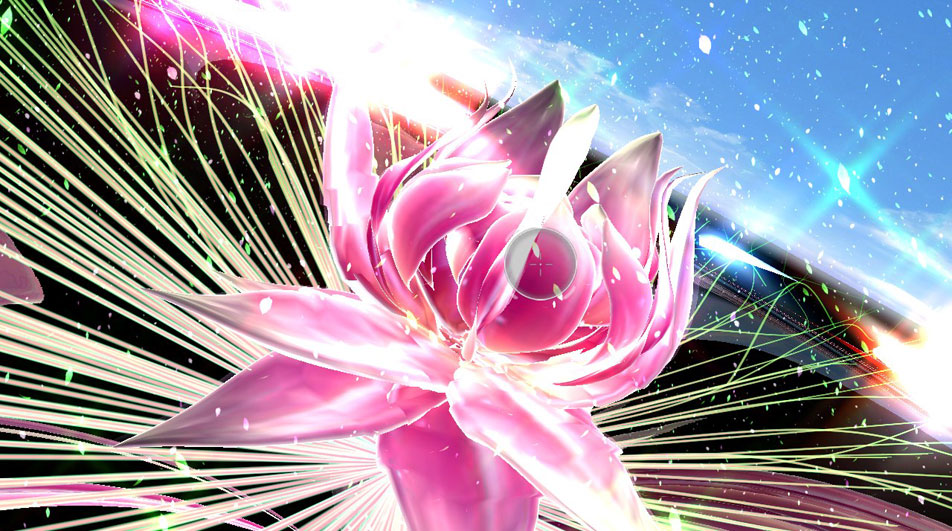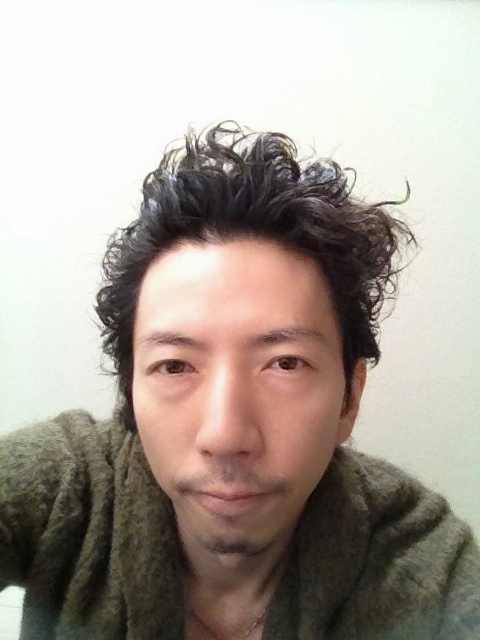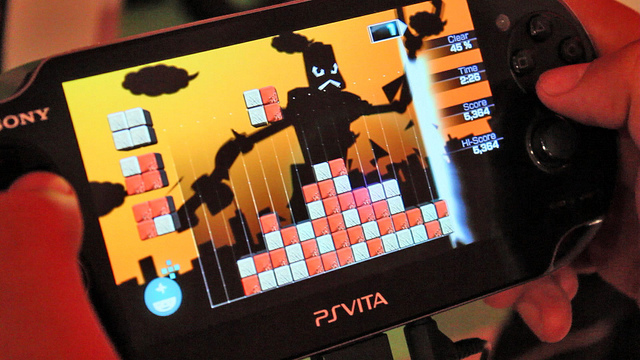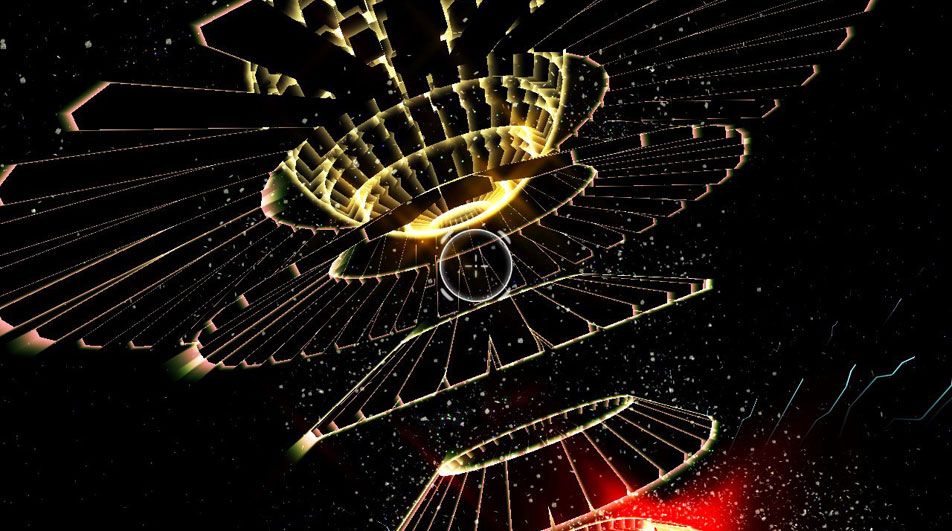Welcome Japanese readers. The Japanese version of the interview is below the English version.
ようこそ日本の読者の皆様。インタビューの日本語版は、英語版の下に掲載されております。
As I mentioned in my interview with Tomoya Kishi: Japanese video game composers and musicians get a good bit of coverage and acclaim over in the West, but the people making the booms and whoosh sounds don’t seem to get much visibility. This time I am talking with Yuki Ichiki who was the Sound Director on Child of Eden and Lumines Electronic Symphony.

Designing Sound: How did you get started in sound design? What inspired you to do audio for games?
Yuki Ichiki: I used to be a violinist. I was performing on stage for artists on TV and commercial after graduating a college of music, and I started composing music at the same time.
One day, a friend of mine sent my demo to a game company. And I was promoted to work as a sound creator in the company. I was making various sound related works in the beginning, and I was fascinated by creating sound effects and started the sound design that capture the whole picture of the game. I was not influenced by the particular thing to get involved in the game music industry. I don’t actually think the game music is different from other music. I only understand the technique and limit to express music in games. Of course there are specific techniques for movie music and stage music itself. This is something like the difference between Rugby and American Football. It looks similar for the people who don’t know but these are two different games that have different rules. The technique required for each type of music is different, but the knowledge and ability to express music does not have any difference.
What software do you use for sound design? Any favorite plugins and workflows?
As DAW I use Pro Tools in most of the projects. Sometimes I use Cubase.
When I do detailed wave editing works such as voice editing and finishing sound effects, I use Sound Forge. For plugins,mainly I use Platinum Bundle of WAVES.

For you what is the most important process in the creation of sound for video games?
What I always focus is to build the atmosphere and sense of presence in the world of game. Great game music takes player into the screen and world of the game completely. Some game design can make the players feel sick because they cannot balance the feeling of sight, hearing and other senses. As you already know, music is one of the important elements to establish the atmosphere of the game world. Music can also control players’ emotion as well as the production of the game world. The game that has great sense of presence in music has effective environment sound effect and music allocated on the right situation and mixed in the right balance. Especially the game that has great BGM blends into to the game which does not make players recognizes the music but to control players’ emotion as producer aims. And sometimes, it destroys the atmosphere of well-designed world at the best timing. We need impressive music for that. Some people might think the music has started all of a sudden. If the music used in the scene captures players mind, the game itself gives the strong impression on them. As just described, the game which has a good balance of building and destroy is a successful work piece in terms of producing the world of game. I always focus on this point in any category of games.

You were the Sound Director for Child of Eden and Lumines Electronic Symphony: In both games there is an overall music track that all sound events have to be synced to. What was your process for getting the right balance of proper sound effect feedback that also fit well within the track? (By that I mean sounds that serve the gameplay function of certain objects or sounds letting the player know about incoming missiles or low health while still having the music sound good).
As you said, sound effects in both games have various roles through the dramatic impact to the functional impact.
Take this point as a given that ‘all sound effect has to be a part of music’. The most important point is that to be comfortable. It is the action towards the graphic image from the sight, which means players take action toward the object using controller or Kinect. The action generates the sound effect, and the sound effect gives players the sense of creating soothing sound by synchronizing the sound effect and music as if this is the reward of the action players made.
I aimed to make the sound effect that players would like to make that comfortable music many times. I basically made the sound effect quantize to the 16th note towards music. As an application, I tried to develop a sense by making one sound that consisted of 2 sixteenth notes, and quantize to 8th notes.I choose the quantize rate at the point to meet graphic, graphic movement and the sound which was designed for them. As you pointed out, I found it challenging to make the ‘alert’ function sound. This sound has the priority in functional aspect, but I did not want to make the sound uncomfortable. I had numbers of trial and found out if the sound is blended in to the music too much, and players don’t realize that there’s a danger. It was challenging to find the best balance between the required function and design along the music required.

Was it especially challenging composing an interactive music track for Child Of Eden or Lumines Electronic Symphony as opposed to composing a typical non-interactive track for another game you have worked on like Armored Core: Last Raven?
I had never been involved producing game which uses music interactively. In principal, I was afraid if my experience would never help developing the game. I’ve searched ways to approach in sound design in the game for almost one year. To find ways, I have tried various ways which I had never tried in the production process and learnt better ways to create sound for ‘Child of Eden.’ I have established my own new method of creating music after long period of development, and I have realized the way I used for non-interactive games can be applied for the creation of ‘Child of Eden’ as well.
After find thing the way, I could control sound creation in deeper level. I think the experience in the making process of ‘Child of Eden’ was fully utilized in the production of ‘Lumines Electronic Symphony’. The game system for ‘Lumines Electronic Symphony’ is fairly logical. In addition, game music increases latitude and the game was updated to grow elation by increasing the types of sound effect, it is the reward for the action in the game for players. Although there are plenty of ideas which I did not use, those ideas must have come from the precious experience of ‘Child of Eden’ production process.
How do you see the sound in Japanese and Western video games today? What do you think could be the next step or improved?
Game has become more multifaceted in project size, category, and devises to play in the last 10 years. Subsequently, game music is in need of becoming diversified to keep up with it. Naturally, game music will be more sophisticated in many categories of game. However, this is the only improvement of technique in production perspective, sound producers still have concerns even the numbers of middle ware are increasing in game development.
Although self-music making and playing content is popular in iOS device and so on, this still remains in the category of a ‘tool’. Of course there already are music games with big hit; however, if we can improve the approach to the entertainment level of ‘creating music’, I think there will be another big movement.
What are some of your favorite video games overall and in terms of sound?
One of my favorite is “Contre Jour.”
I also like “WET” and its world view which is from three years ago. The most favorite one is “UFO ~A Day In The Life~” from 1998.
I would like to thank Yuki Ichiki for participating in the interview and I would also like to thank Reina Kaneniwa for the wonderful translation.
———————————–
Designing Sound: 何がきっかけでサウンドデザインの仕事を始めたのですか?
ゲーム音楽に携わっているのは何かの影響を受けてでしょうか?
一木裕樹氏: 僕はもともとヴァイオリニストでした。音楽大学で学んだ後、テレビ番組やCM、アーティストの後ろなどで演奏していましたが、それと同時期に作曲を始めました。
ある時、友人が僕のつくったデモテープをとあるゲーム会社に送りました。縁があってその会社にサウンドクリエーターとして入社することになり、様々 なサウンド業務をこなしていく中で効果音制作の魅力に気づき、作品をトータルに捉えたサウンドデザインを行うようになりました。
特に何かに影響を受けたためにゲーム音楽に携わっているわけではありません。というのも、僕はあまりゲーム音楽とその他の音楽を別のものとして捉え ていないのです。ただ、ゲームという表現媒体に対する音づくりならではの手法やある種の制限については深く理解しているつもりではいます。もちろん映画音 楽には映画音楽の、舞台音楽には舞台音楽の、それぞれ専門的な細かいテクニックは存在します。それはラグビーとアメリカンフットボールのように、知らない 人が見たら似たような、しかし本当は違うルールをもつ別の競技のようなものですよね。
求められるテクニックはそれぞれ違いますが、それに必要な筋肉や運動能力には然程違いは無いんです。
サウンドデザインの際、使用しているソフトウェアを教えていただけますか?
他、こだわりのプラグインや仕事の進め方があれば教えてください。
まずDAWとしては多くのプロジェクトでProToolsを使っています。時々Cubaseを使うこともあります。
ボイスの編集や効果音の仕上げなど細かい波形編集を行う際はSoundForgeを使います。
プラグインは主にWAVESのPlatinum Bundleを使用します。
一木さんにとって、ビデオゲームの音楽制作行程で最も重要視していることは何ですか?
いつも意識することは、空気感・音場感の構築と破壊です。
優れた音響デザインはその体験者を完全にその世界の中、つまり画面の中の世界に取り込みます。デザインの方向性にもよりますが、体験者の中には視覚・聴覚とそれ以外の感覚のバランスをうまく取ることができずに酷く酔ってしまう者もいるほどです。
周知のとおり、音楽もその世界の空気感を構築する重要な要素のひとつです。音楽は空気感を演出することに加え、体験者の感情をコントロールすることもできます。
音場感の優れた作品では、効果的な音響SEと場面に沿った的確な音楽が正しく配置され、正しいバランスでミックスされています。特にBGMとして優れている音楽は、制作者の意図するままに体験者の感情を揺さぶりながらも、そこに音楽が存在することを殆ど意識させないほど場面の空気そのものとなって体験者を包み込みます。
そうして綿密に組み立てた空気感を最良のポイントで壊すのです。そのためには存在感のある印象的な音楽が必要です。ともすれば、突然音楽が鳴りだし たように錯覚する者もいるかもしれません。ここで使う音楽によってしっかりと体験者の心を掴むことができれば、ゲームそのものが印象深い体験として強烈に 刻まれることでしょう。
このように構築と破壊のバランスがうまくとれている作品は、その世界観の演出に見事に成功したと言えます。どのようなジャンルのゲームにおいても、この点について最も重要視しています。
一木さんは、チャイルドオブエデンとルミネス・エレクトロニック・シンフォニーのサウンドディレクターだったんですよね。
両ゲームでは、全てのサウンドがゲームと同期している必要があるわけですよね。
最も適した効果音を絶妙なバランスを適用させ、尚且つトラック内にキチンとおさめる為に、一木さんが取った手法について教えていただけますか?
(つまり、効果音はゲーム内でいろんな役割を果たしますよね。ゲームプレイ機能そのものになったり、ミサイルが近づいくるのを音で知らせたり、体力が良好な状態から減ってきた状態を知らせたり。)
仰るとおり、両作品における効果音には演出的なものから機能的なものまで様々な役割が与えられています。
大前提として、「すべての音が音楽の一部でなくてはならない」という点があります。制作にあたって最も重要だったポイントは、「心地よい」というこ とです。視覚から受け取るグラフィックイメージとそれに対するアクション、つまりコントローラーやKinectを使ってプレイヤーは対象物に対してアク ションをとります。そのリワードとしての音が音楽的に同期しながら、手触り・ご褒美として、何度でもその音を奏でたくなるような心地よいものを目指しまし た。
基本的に制作した音は音楽に対して16分でクォンタイズさせていますが、その応用として1つの音を16分音符2つ分からなるものとしてつくり、それ を8分でクォンタイズさせることで、より演奏感を高めるといったことも行いました。クォンタイズ値はグラフィックのイメージと動き、それに合わせてデザイ ンした音との兼ね合いで決定します。
ご指摘のとおり、「アラート」の機能を持たせなければならない音のデザインには比較的苦労しました。これらの音は機能面での役割が最もプライオリ ティが高いわけですが、だからと言って不快過ぎるものにはしたくなかったのです。数えきれないほどのテストをしましたが、あまりにも巧く音楽に馴染んだ音 では、プレイヤーが危険な物が近づいてきていることを殆ど認識できずにいました。求められる機能と音楽に沿ったデザインのバランスをとってベストなポイン トを探ることはとても難しいことでした。
過去に一木さんが携わったゲーム、例えば”Armored Core: Last Raven”のようなゲームは、非双方向的なゲームの典型ですよね。
チャイルドオブエデンやルミネス・エレクトロニック・シンフォニーにおいては、双方向的音楽の制作となり、特別な挑戦だったのではないでしょうか?
Child of Edenの開発に参加するまで、僕はこのような音楽をインタラクティヴに扱う作品に関わることが殆どありませんでした。開発当初は、それまで積んできた自 分の経験が何も役に立たないのではないかと感じ、相当戸惑いました。おそらく1年弱くらいの間はこの作品でのサウンドデザインにおけるアプローチのしかた を掴めていなかったと思います。
だからすべての制作行程において、これまでは取らなかった方法を試していき、少しずつこの作品での音のつくり方を身体に憶えさせていったのです。
ただ長い開発期間を経て自分の中に新しい方法論が確立されていくにつれ、以前に培われた経験、つまり非双方向的な作品で多用してきた類いの手法がこの作品でのあらゆる制作過程においても応用的に必要であることに気づきました。
そこからは本当に深いレベルで、サウンド制作のコントロールが効くようになったと思います。
Lumines Electronic SymphonyはChild of Edenの次につくられた作品ですが、Child of Edenでの経験が存分に活かされた制作が出来たのではないかと思っています。
Luminesのシステムは非常にロジカルでよくできたものですが、それを更に、音楽的な自由度を向上し、リワードとして鳴る音の種類を増やしてト リップ感を高められるようにアップデートしました。採用しなかった仕組みも数多くありますが、それらのアイデアが容易に得られた大きな要因はやはり Child of Edenの開発で養われた多くの貴重な経験でしょう。
最近の欧米・日本におけるビデオゲームサウンドについてお考えを聞かせてください。次の段階へ進むのでしょうか、それともよりブラッシュアップされて行くのでしょうか?
過去10年程でゲームというものは、プロジェクトの規模から作品のタイプ、アウトプットするデバイスに至るまで様々な多様化が進みましたよね。必然的にサウンドもそれぞれに対応すべく多様化されてきました。
それぞれのカテゴリーにおけるブラッシュアップは当然なされていくでしょう。ただ制作者の視点から見ると、「これまで技術的に出来なかったことが出 来るようになった」といったような細かな部分である気がします。ゲーム開発におけるサウンド制作向けのミドルウェアが随分と増えてきましたが、やはり制作 者は常にどこかで「ままならない」気持ちを抱えているのです。
次の段階という意味では、ユーザー自身が音楽をつくったり奏でたりするようなコンテンツがiOSデバイスなどでも人気で すが、まだまだ「ツール」の域を脱していません。もちろん既に大ヒットした音楽ゲームなどはありますが、「つくる」といったアプローチを絶妙にエンタテイ ンメントの領域まで昇華できれば、また大きなムーヴメントとなるのではないでしょうか。
一木さんがサウンド面などでお気に入りのビデオゲームを教えてください。
「Contre Jour」はとても気に入っています。
3年半ほど前の作品ですが、「WET」も世界観が好きなゲームでした。
いちばん好きな作品は1998年に発売された「UFO ~A Day In The Life~」です。
一木裕樹氏にインタビューへのご協力をいただきましたことを感謝いたします。また素晴らしい翻訳をいただきました金庭玲奈さんにも感謝申し上げます。